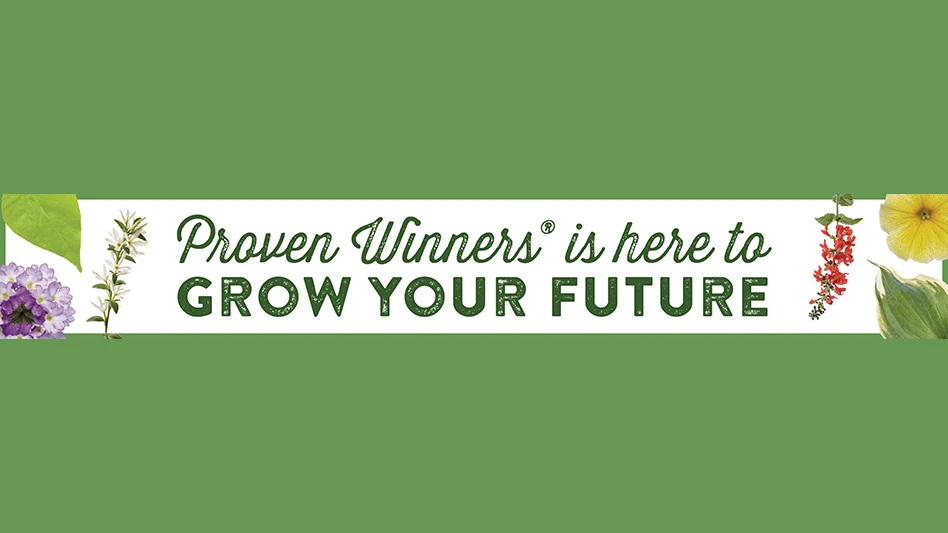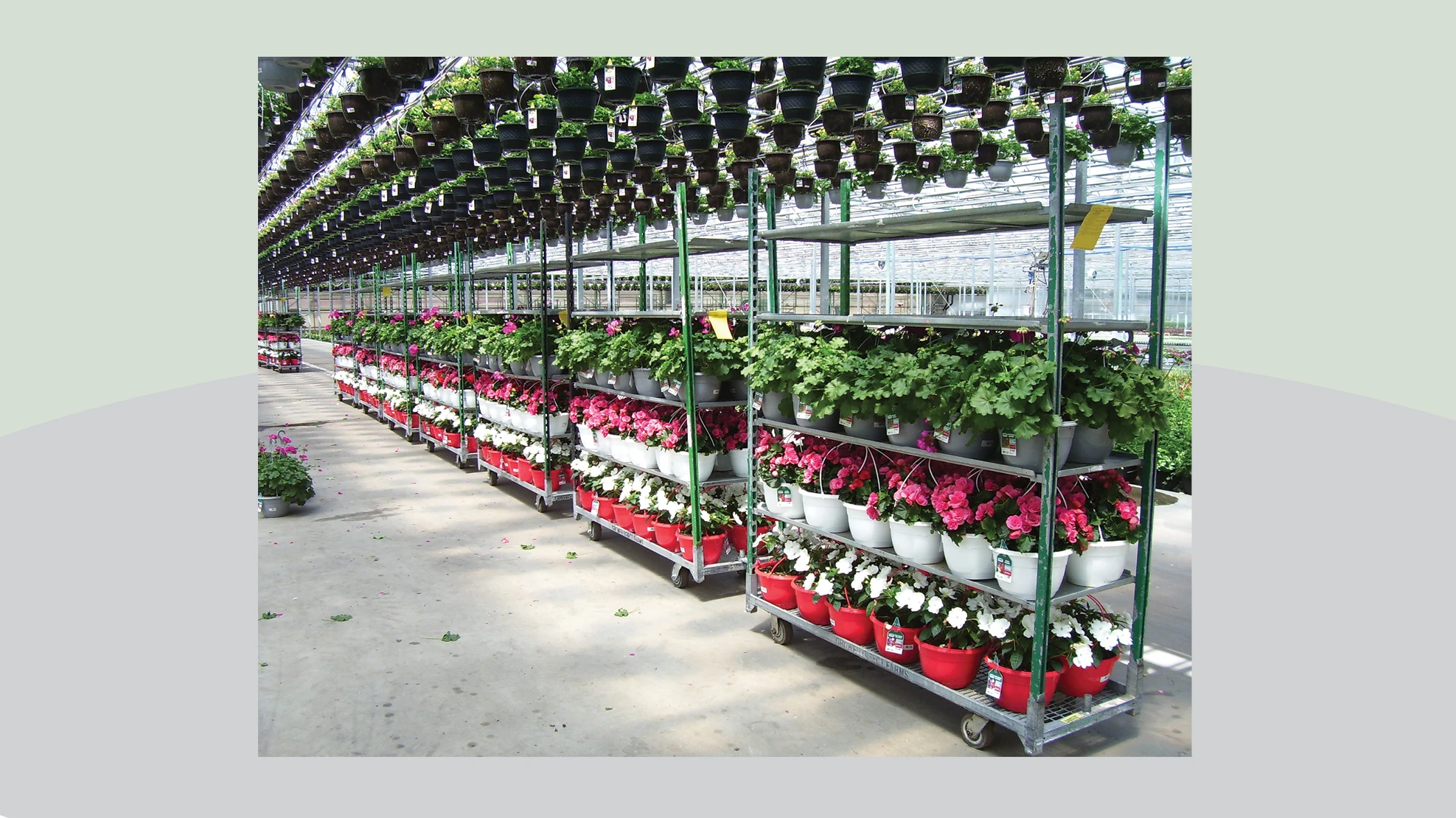
Water is a main point of research in the Horticultural Substrates Laboratory at North Carolina State University pertaining to its capture, retention, and availability within soilless substrates during the production of container-grown crops.
While all of these criteria are relevant, water retention and availability wouldn’t be pressing topics without water first being captured by the substrate during irrigation events.
The three properties are relatively straightforward, in that we as researchers in horticultural science are always working to improve water use and improving the sustainability and economics of plant production. The order in which these three properties of growing media are researched is not subsequent, however there must be a general understanding of how substrates are able to capture water before retention and availability are accessed.
As you know, there is a global spotlight on the use of water in the horticultural and agricultural industries, and these are driving forces behind our continued efforts to research this area.
Recent work on substrate hydrological evaluations includes the wettability and water capture of peat, coconut coir, aged pine bark and various engineered wood products. In this article, we will discuss some recent data from an experiment that included sphagnum peat moss, coconut coir, and pine bark undergoing irrigation testing to understand each substrate’s capture limitations based on the pre-set moisture levels, aka “preconditioning”.


The trial
Sphagnum peatmoss, coconut coir, and pine bark (Fig. 1) were all selected for testing based on the unique physical differences they possess. Peat is known to become hydrophobic under low moisture conditions, coir is relatively hydrophilic under all conditions and pine bark can be highly variable based on particle size and age.
To test the impacts of initial substrate moisture content (at the time of potting), we chose three moisture levels depicting different conditions at the time of potting. We tested substrates at initial moisture contents of 50% by volume (a common substrate moisture level set before potting) as well as at a lower level (dry) of 33% and upper level (wet) of 67%.
Two irrigation delivery methods (surface irrigation and subirrigation) were evaluated to better understand substrate water capture as influenced by the initial moisture level preconditioning of the materials. The surface irrigation system (Fig. 2D) is a modified surface-drip application system that has been used for substrate wettability and hydration efficiency testing for years. The subirrigation system (Fig. 2A-C) is a small-scale ebb and flood unit that was recently developed specifically for subirrigation substrate efficiency testing.
In order to create an accurate comparison of these two irrigation techniques, the subirrigation testing was modified to be under the same time-based irrigation as the surface irrigation system, with the water level kept at 2.5cm from the base of the substrate samples.
For both irrigation tests, substrate samples were packed (by weight) in clear plastic cores and then placed in their respective systems (Fig. 2).

For surface irrigation, a series of 10 simulated drip irrigation events were applied to the surface of the samples using 200mL of water at each event. After each event, the volume of water that passed through the sample was collected and measured to determine the amount of water captured during each event.
For subirrigation, the packed cylinders were placed on a mesh screen elevated off of the surface of the unit to maximize surface area exposure to the water. The unit was filled with water up to 2.5cm off of the base of the cylinder and held at that level for 5 minutes of continuous irrigation and repeated over a series of 10 events. After each event, the unit is drained over one timed minute and each sample is weighed to determine the amount of water absorbed (captured) by the substrate. For both irrigation tests, after the tenth irrigation, the samples were further analyzed to determine their maximum container capacity potentials (water holding). Data were then graphed in order to compare the results of each irrigation delivery system and as impact of initial moisture content on the different substrates.
Particle size of each substrate was also determined to help characterize each material and be able to correlate how particle size contributed to water capture (Fig. 3). Larger particles within a substrate result in larger channels for water to flow through, but fewer small pockets for water to collect and retain. With that in mind, each base substrate used had a different ratio of particle sizes to accurately understand pore size impacts on the capture and retention of water through irrigation.
Coir represented the substrate with the highest percentage of particles smaller than 2.0 mm, representing 93.8% of all particles tested while pine bark showed the highest percentage of coarse particles with a value of 53.6%. Peat occupied a middle ground between coir and pine bark with 13% more coarse particles than coir, but still 34% less than that of pine bark.
At all initial moisture levels, coir was able to take up water, however moisture content played a role in how much water was retained. Surface irrigation and under drier conditions needed four irrigation events to reach its maximum of 60% volumetric water content (Fig. 4), reducing irrigation events needed to reach higher water capture as moisture level increased to 50% and 67%. For subirrigation, coir never reached a steady-state or maximum absorption at any moisture level. At 50% moisture, coir reached a final hydration of 74% through surface irrigation and 52% volumetrically with subirrigation, never reaching its container capacity of ~75% (Fig. 4).
For peat, moisture content had the greatest influence on water capture with surface irrigation. As is well documented, intensity of hydrophobicity of peat increases at lower substrate moisture contents. These hydrophobic intensities can influence initial wetting and rewetting (subsequent irrigations during plant production) and impair the physical properties of the substrate. Regardless of moisture content, peat captured less water than that of coir, with very little water captured at 33% and 50% moisture (Fig. 4). Comparing irrigation techniques, peat captured ~20% more water through surface irrigation than through subirrigation. This is a result of surface irrigation using gravimetric pull to break the surface barrier of a low-moisture peat to channelize and hydrate the material whereas subirrigation relies on the upward wicking of water vertically through the substrate/container.

Pine bark had a more consistent increase in water captured over the 10 irrigation events than either peat or coir. Of the three substrates, bark contained the highest percentage of coarse particles (Fig. 3), while also having a similar portion of medium (2.0-6.3 mm) sized particles compared to peat, resulting in larger pore spaces for water to travel through but fewer small pores to retain that water. The volumetric water content curves (Fig. 4) identify a degree of consistency between irrigation techniques, regardless of initial moisture level or irrigation method. At 50% and 67% moisture, subirrigation produced maximum irrigation absorption after one irrigation event, with less than 2% difference between first and last irrigation event. At all moisture levels, surface irrigation had water captured after the final irrigation event compared to subirrigation, but the difference between surface irrigation and subirrigation after the final hydration was less than 10% volumetrically.
Aside from irrigation techniques and water capture, the biggest difference happens visually. Irrigating from above will always show a surface change over time to help growers identify at a quick glance whether they require additional irrigation, while frequently subirrigated containers will not show a visual color change to the container surface. But this research shows that while we may not be able to see that difference, subirrigation is allowing the substrate to still capture comparable amounts of water, depending on substrate and container type.
There are other potential capabilities of these two testing systems, with more work to come involving wetting agent application method and efficacy, evaporative water loss from substrates and non-plastic containers, and the water capture and efficiency of substrate blends formulated from numerous components, ratios, particle sizes, etc.
Study take homes
With this research showing that peat and coir capture ~20% more water through surface irrigation and only a ~7% difference in captured water through both irrigation techniques on pine bark, we can continue to progress in water conservation.
Water is a hot button topic that continues to warrant further research to continually inform growers on water management strategies and specific substrate-irrigation-crop combinations. Our industry is continuing to raise the bar in how we approach the growing concern of sustainability and addressing our water uses is going to continue to play a huge role in our future success.

Explore the June 2021 Issue
Check out more from this issue and find your next story to read.
Latest from Greenhouse Management
- Society of American Florists accepting entries for 2025 Marketer of the Year Contest
- Sustainabloom launches Wholesale Nickel Program to support floriculture sustainability
- American Horticultural Society welcomes five new board members
- Color Orchids acquires Floricultura Pacific, becoming largest orchid supplier in U.S.
- American Floral Endowment establishes Demaree Family Floriculture Advancement Fund
- The Growth Industry Episode 3: Across the Pond with Neville Stein
- Flowerful growth
- The Growth Industry Episode 2: Emily Showalter on how Willoway Nurseries transformed its business






